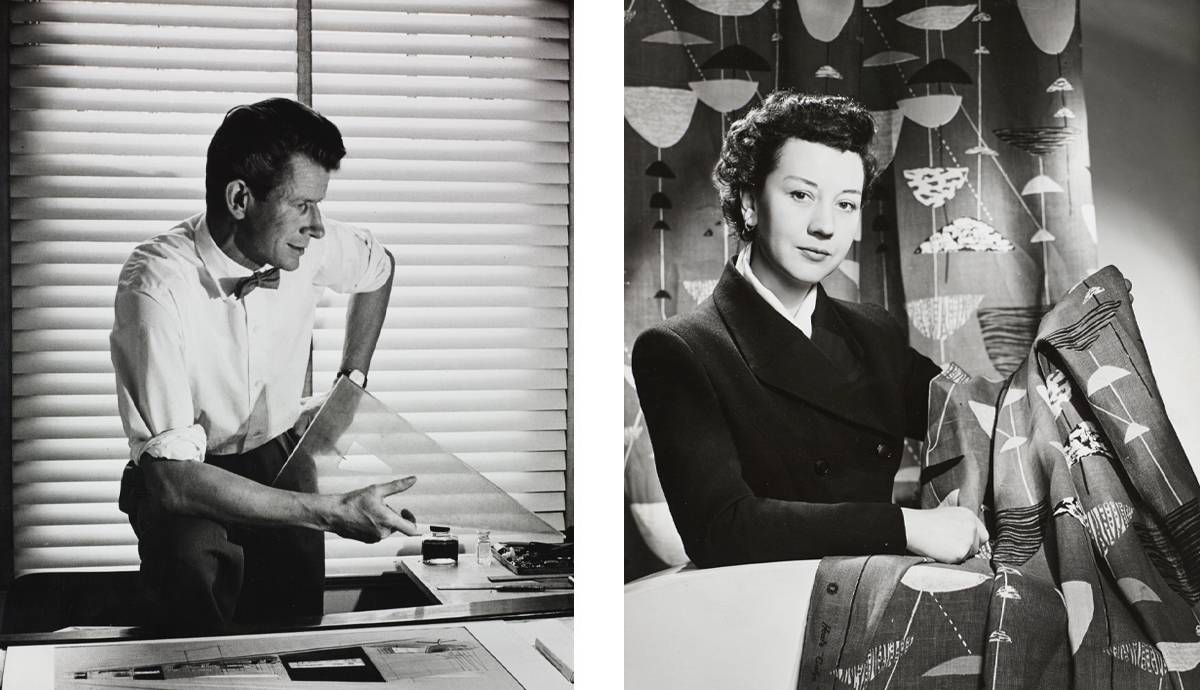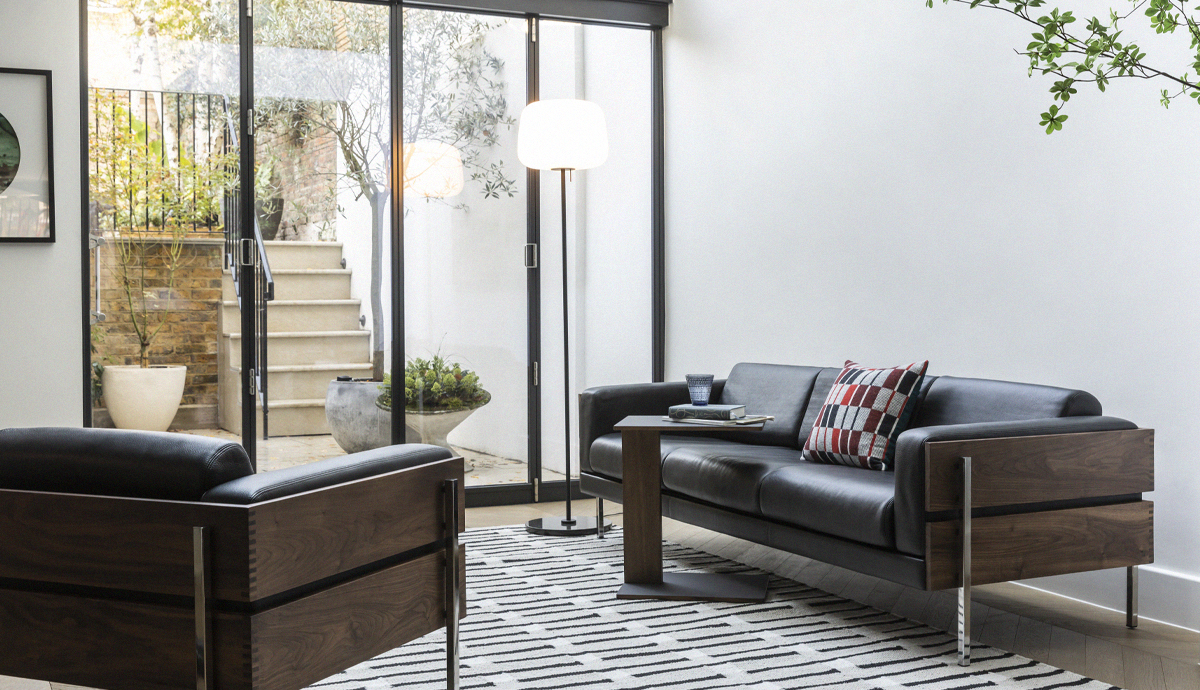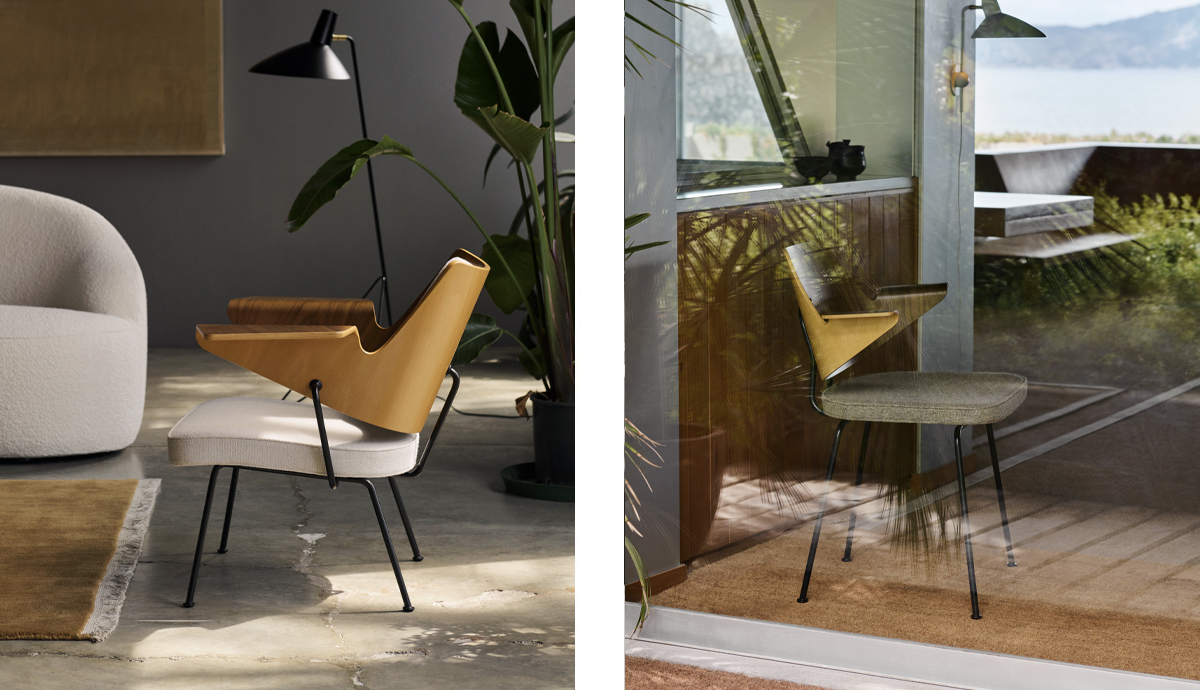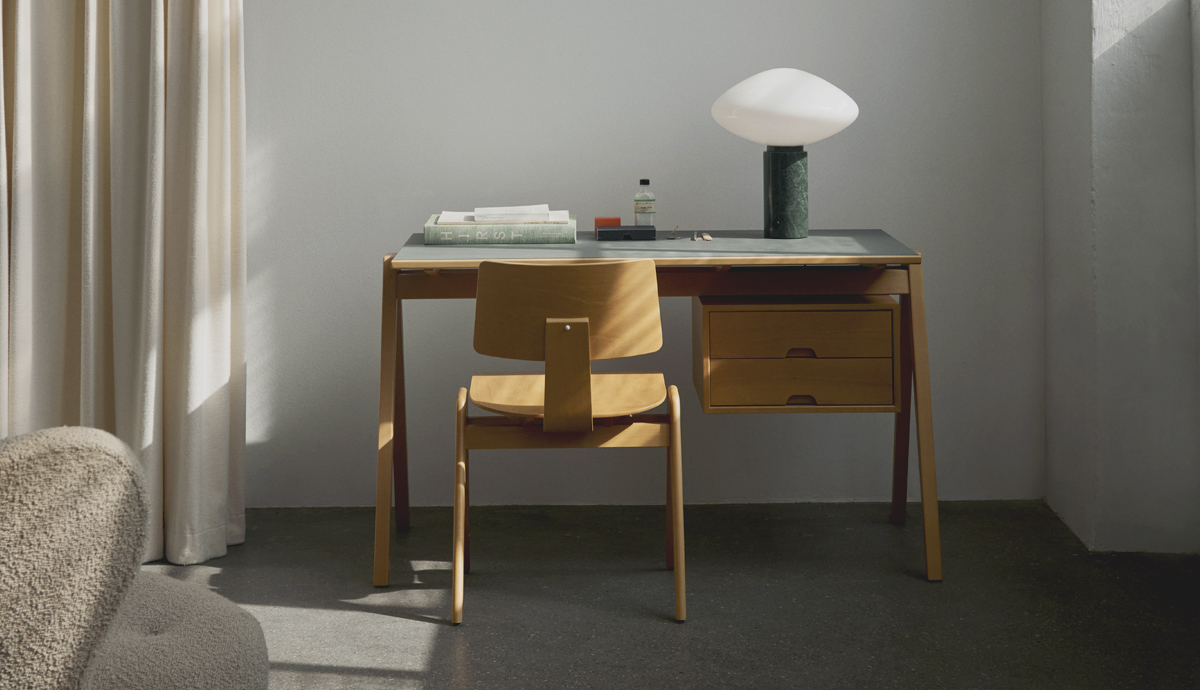The World Of Robin Day, a Mid-Century British Icon.
One of the most influential British designers of the 20th century, Robin Day’s work has recently seen something of a renaissance, thanks to reissues of a number of classic pieces from Case Furniture and &Tradition.
Something of a polymath, the Buckinghamshire born designer worked most extensively in the interior and industrial design industries, but also involved in the fields of graphic design and architecture. Emerging as a major figure in the wake of the Second World War, Day came to prominence following his success at the International Competition For Low Cost Design in 1948, where, alongside architect Clive Latimer, Day won first prize in the Storage Unit category. The competition, which was organised by the Museum Of Modern Art in New York can be seen as a Year Zero for what we now see and understand Modernist-era furniture to be; it was at this same event that Charles Eames also came to be known, after he won the Second Prize award in the Seating category.

Eames makes for a clear parallel to Day, with the impact that the two had on their own national design comparable. Following the Second World War both were employed by major corporations and government institutions to help to design and navigate a national aesthetic that incorporated hope and renewal. Day was one of the most high-profile contributors to the Festival Of Britain in 1951, an event which was envisioned as a great showcase for Britain following the war period. Robin Day worked on a number of exhibits at the festival, including the Homes And Gardens Pavilion, which was designed to illustrate different types of room sets and environments for a wide range of budgets. Day used this as an opportunity to display one of the chairs that he designed earlier that same year for the Royal Festival Hall on London’s South Bank, as part of the launch of the iconic modernist venue. Both the Festival Of Britain and the Royal Festival Hall were major symbols of the country’s restoration and reinvigoration after World War II, and through his association with the two events Day’s profile was raised significantly, pushing him into the upper echelons of world design.

The chairs and terrace furniture that Robin Day designed for the Royal Festival Hall were reissued in 2024 in collaboration with &Tradition, alongside a number of other pieces that he produced around the same time, including the Daystak tables and chair. Originally made by Hille, the British furniture-maker with whom Day had a working relationship for over 20 years, the Daystak chairs serve as an indication as to where the design landscape was heading in the early-1950s, with simple, functional furniture with machined elements valued highly. Bent plywood and the organic shapes that could be achieved with this wonder material was employed in the production of the 675 Chair, which was first revealed in 1953 and remains popular to this day, while the Forum lounge chair and sofas stand as one of the most distinctive pieces of mid-century modern design.
In addition to his work as a furniture maker Robin Day also worked as a design consultant, often alongside his wife Lucienne Day, and most prominently for the John Lewis Partnership and BOAC. Their work with the JLP is often seen as one of the most towering of achievements, as they oversaw the in-house style guide during a 25-year tenure, which comprehensively covered every facet of the iconic British retailer. In the 1990s a number of pieces from the Robin Day archives were reissued by Habitat, triggering a renewed interest in his furniture, while examples of his work can be found in the permanent collections of museums and galleries around the world.

Today both the 675 Chair and the Forum range are produced by Case Furniture, who are the ideal custodians of this particular branch of Robin Day’s work in the furniture field. Produced in close collaboration with the Robin and Lucienne Day Foundation to the same exacting standards as outlined by Day some seven decades ago, both are available in a wide range of finishes, with the enduring designs guaranteed to impress for at least another 70 years. The Forum 2-seater sofa is currently on display in The Flint, our Liverpool showroom in the heart of the Baltic Triangle.
-
Designer ProfilesIntercontinental Polymath; The Life And Work Of Isamu NoguchiRead More
One of the most acclaimed sculptors and product designers of the 20th century, Isamu Noguchi was one of the most formidable figures in design in the years following the Second World War. A sculptor by trade, Isamu Noguchi was born...
-
Designer ProfilesThe World Of Robin Day, a Mid-Century British Icon.Read More
One of the most influential British designers of the 20th century, Robin Day’s work has recently seen something of a renaissance, thanks to reissues of a number of classic pieces from Case Furniture and &Tradition. Something of a polymath, the...


